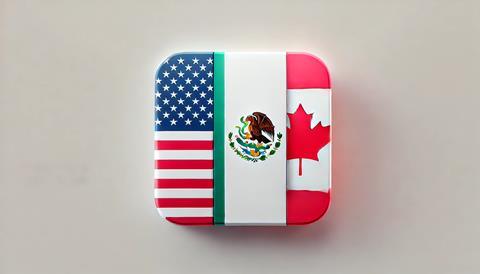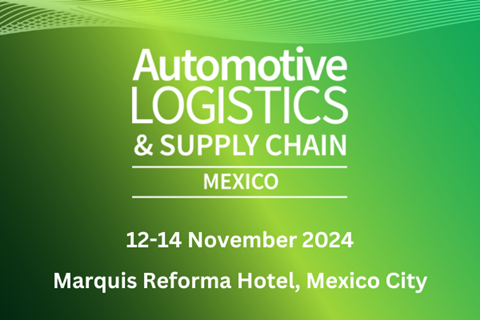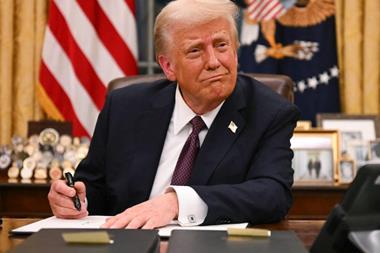[Updated Novemeber 11] Following the announcement that Donald Trump has won the 2024 US presidential election, the North American automotive supply chain has been plunged into further uncertainty and unpredictability.

The future of the EV industry and sustainability regulations have a question mark hanging over them, while global trade could change drastically, with China and Europe potentially facing strict import tariffs to the US. And the growing trend of nearshoring could halt temporarily and investment in Mexico could stall while OEMs wait to see how the Republicans negotiate the United States-Mexico-Canada free trade agreement (USMCA) up for review in 2026.
Speculation about the impact of the election on the automotive supply chain has been rife for months and was a topic of discussion at Automotive Logistics & Supply Chain Global in Detroit this September. At the time, Mike Wall, executive director, automotive analysis at S&P told delegates that there would likely be a tariff on Mexico imports and a potential for the USMCA to be scrapped.
Now that the election results are known, Mike Wall tells Automotive Logistics that the changes, and impacts, made by the president elect are likely to come thick and fast. But he says the biggest elephant in the room will be on what happens with tariffs. “One thing we’ll be watching very closely is the tariffs that impact Mexico and the broader USMCA arrangement,” he says, as there could be “huge implications” for the North American automotive supply chain.
USMCA timeline and trade relations
The USMCA review remains critical, especially considering the high levels of cross-border automotive trade. When Trump was first elected in 2016, he spoke about renegotiating – or even abandoning – the North American Free Trade Agreement (NAFTA), which had reduced most tariffs on goods traded between the US, Canada and Mexico to encourage smoother, more profitable trade across North America.
Discussions to replace NAFTA began in 2017 with the start of USMCA negotiations. The USMCA aimed to retain many of NAFTA’s core principles while introducing key updates, including stricter labour and environmental standards, enhanced protections for intellectual property and new provisions for digital trade and the automotive industry. An agreement was reached in 2018, and all three countries ratified it between 2019 and 2020 – a complex process that concluded with Canadian Parliament’s approval in March 2020. The USMCA finally took effect in July 2020.
Given the complexity of these 2017–2020 negotiations, any changes to the USMCA would likely require a similar process – unless the US were to unilaterally withdraw. However, this would likely disrupt the North American automotive supply chain as it depends heavily on integrated cross-border production and trade flows. As Wall notes, “Mexico trade with the US, and Canada but particularly the US, has been ingrained, it’s been entrenched over these last 20 to 25 years. We have components that cross the US-Mexico border multiple times before they get installed in a vehicle. Trade in this region is very much viewed as one region. It has been viewed as a trade bloc and sourcing has been metered out accordingly.”
Nearshoring and China
Wall says there is an expectation of continued or intensified tariffs under a Trump administration, particularly when it comes to China and Chinese OEMs nearshoring in Mexico.
“We’re seeing that in the supply chain front, with the level of Chinese suppliers and downstream manufacturers already building up a presence in Mexico to support the likes of BYD, Chery and others,” he says. “It’s not so much to do a direct push into the US necessarily, as much as it is to leverage some of those other markets outside of the US market that are on this side of the hemisphere, like Latin America, South America, maybe even Canada and other opportunities as well.
Read more: Navigating cross-border logistics challenges
He says there is a hypersensitivity around the potential for Chinese products to come to the US through Mexico, particularly under a Trump government. “It’s one thing if you’re producing a part in Mexico and then bolting it to another part in the US,” Wall says, “but it’s another thing if you’ve got a part coming in from China, maybe they’re doing some sort of value add or some other activity to it and then sending it to the US. I think there’s going to be heightened interest and activity around understanding that.”
Labour and wage rates in Mexico
In the last Trump administration in 2016, when the USMCA arrangement was agreed, Mexico’s labour rates and wage rates were looked into, in an attempt to even the playing field with the US rates.
Wall says that in recent years, wage rates in Mexico have been rising with a high demand for labour in the country, because there has been increased production for components and vehicles. “But we’ve also seen some increased activity here in the US,” he says, “so I think it’s going to be interesting to see what strategy is ultimately executed.”
Despite the uncertainty, Wall believes that activity in Mexico will remain robust, also due to the country’s strong domestic demand.
As Mexico’s automotive industry stands at a pivotal crossroads, the Automotive Logistics & Supply Chain Mexico 2024 conference is underway in Mexico City. With over 550 industry leaders converging to explore essential themes like nearshoring, digital transformation and supply chain resiliency, now is the time to engage with the conversations shaping the future of logistics. Catch the latest insights and updates coming out of the event on the Automotive Logistics & Supply Chain Mexico live blog.


























![Global[1]](https://d3n5uof8vony13.cloudfront.net/Pictures/web/a/d/s/global1_726550.svgz)














No comments yet